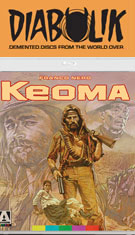
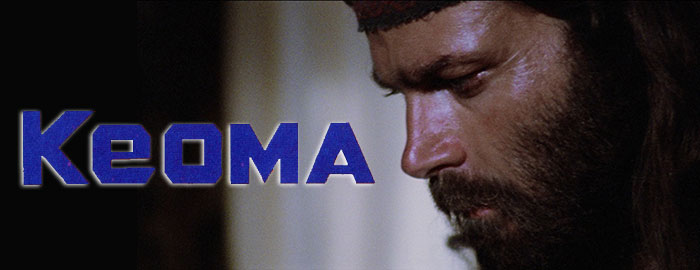


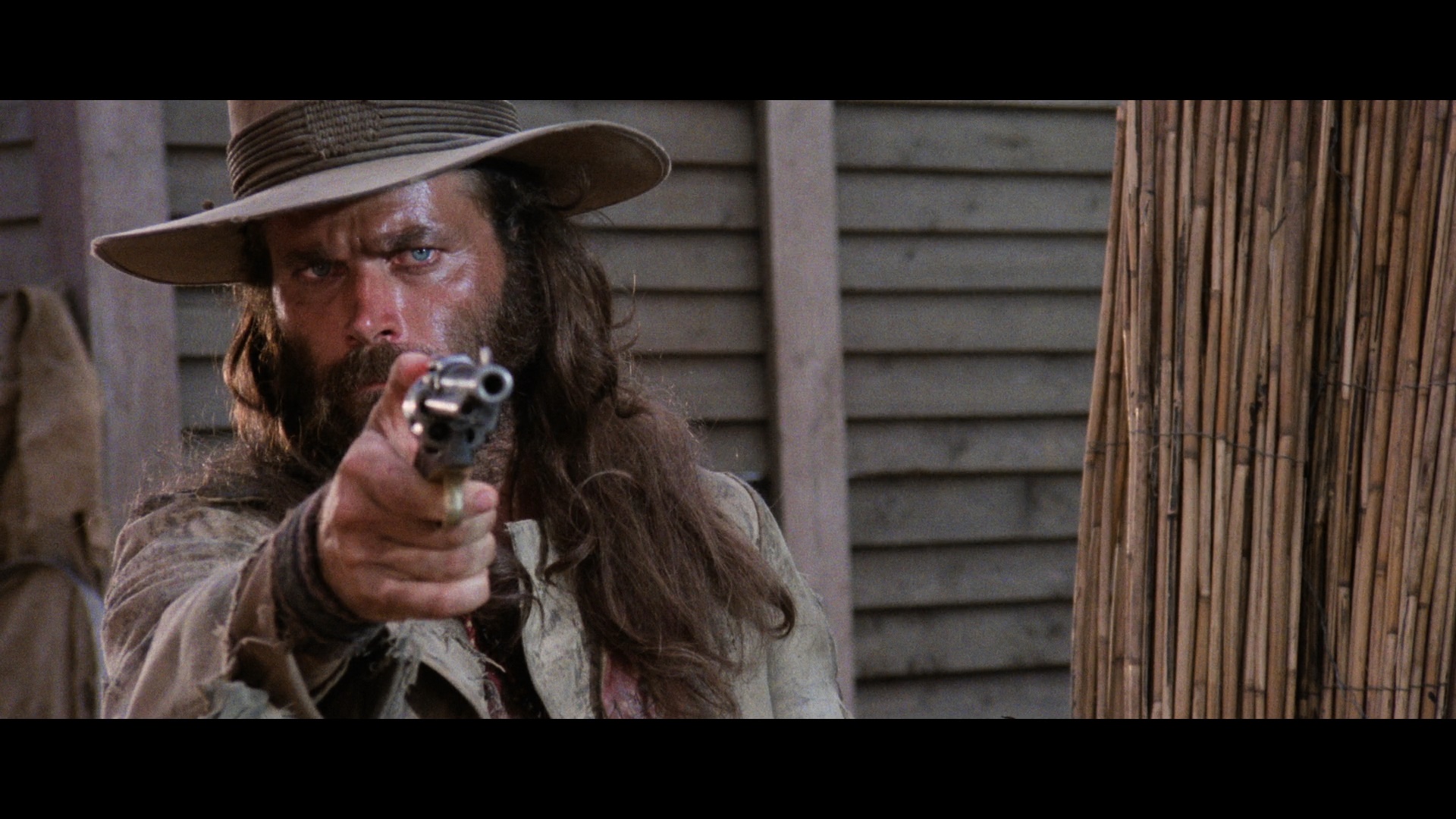 last golden age spaghetti western directed by the great
last golden age spaghetti western directed by the great 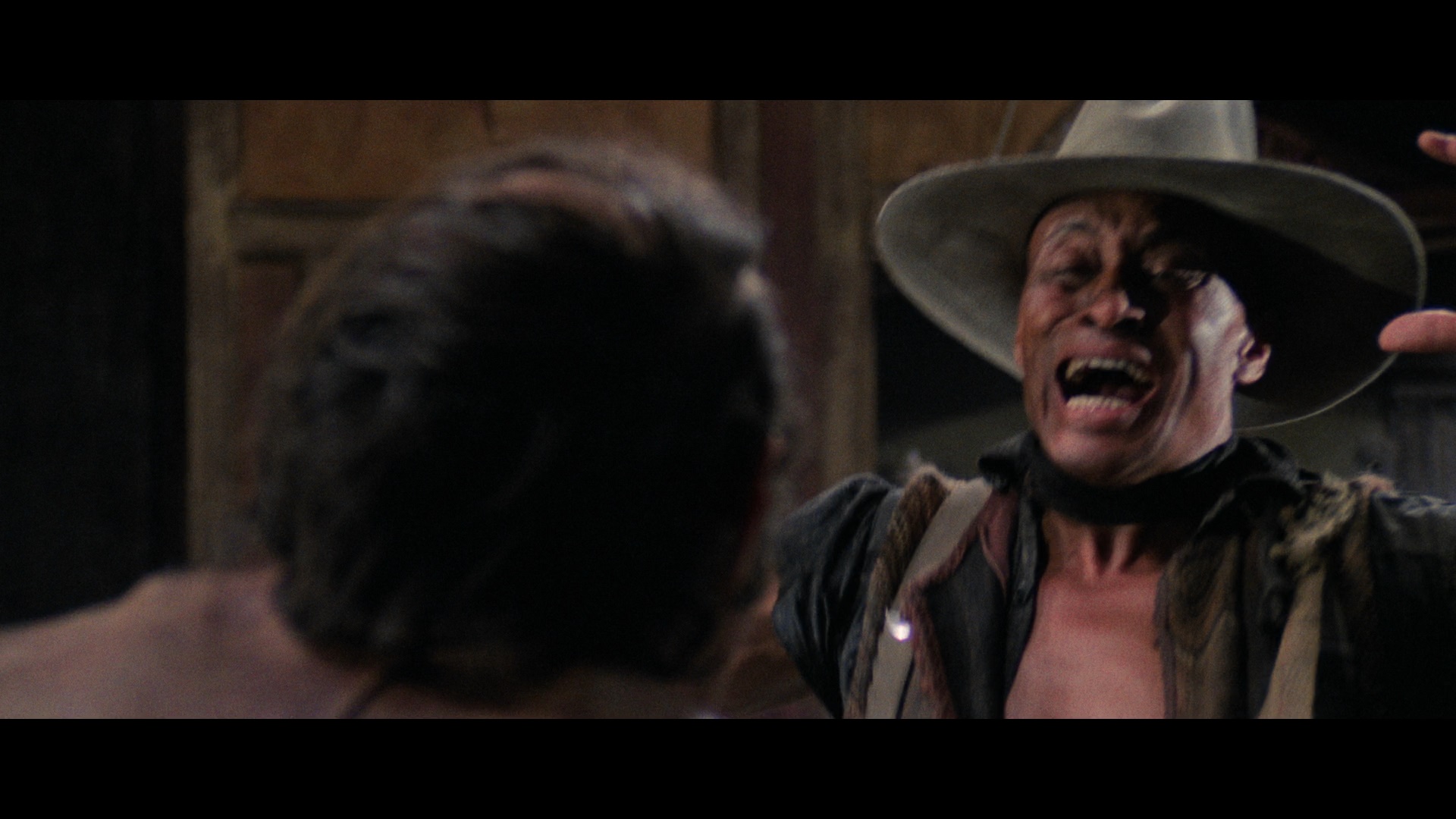 Enzo G. Castellari (The Inglorious Bastards) turned out to be his best, reuniting him with his Street Law star, Franco Nero, for a stylish, dreamlike, and incredibly dusty mythic saga that helped close out the Euro-oater era in grand fashion. The waning demand for spaghetti westerns at the time and its initial English in a heavily edited version in many territories (sometimes as The Violent Breed or Django Rides Again) kept enthusiasm low for years until its merits were eventually appreciated, with the film now standing as a key entry in the careers of its director and stars as well as one of the decade's essential westerns.
Enzo G. Castellari (The Inglorious Bastards) turned out to be his best, reuniting him with his Street Law star, Franco Nero, for a stylish, dreamlike, and incredibly dusty mythic saga that helped close out the Euro-oater era in grand fashion. The waning demand for spaghetti westerns at the time and its initial English in a heavily edited version in many territories (sometimes as The Violent Breed or Django Rides Again) kept enthusiasm low for years until its merits were eventually appreciated, with the film now standing as a key entry in the careers of its director and stars as well as one of the decade's essential westerns.  impossible to talk about Keoma without mentioning its attention-grabbing, very divisive soundtrack by Guido and Maurizio De Angelis,
impossible to talk about Keoma without mentioning its attention-grabbing, very divisive soundtrack by Guido and Maurizio De Angelis, 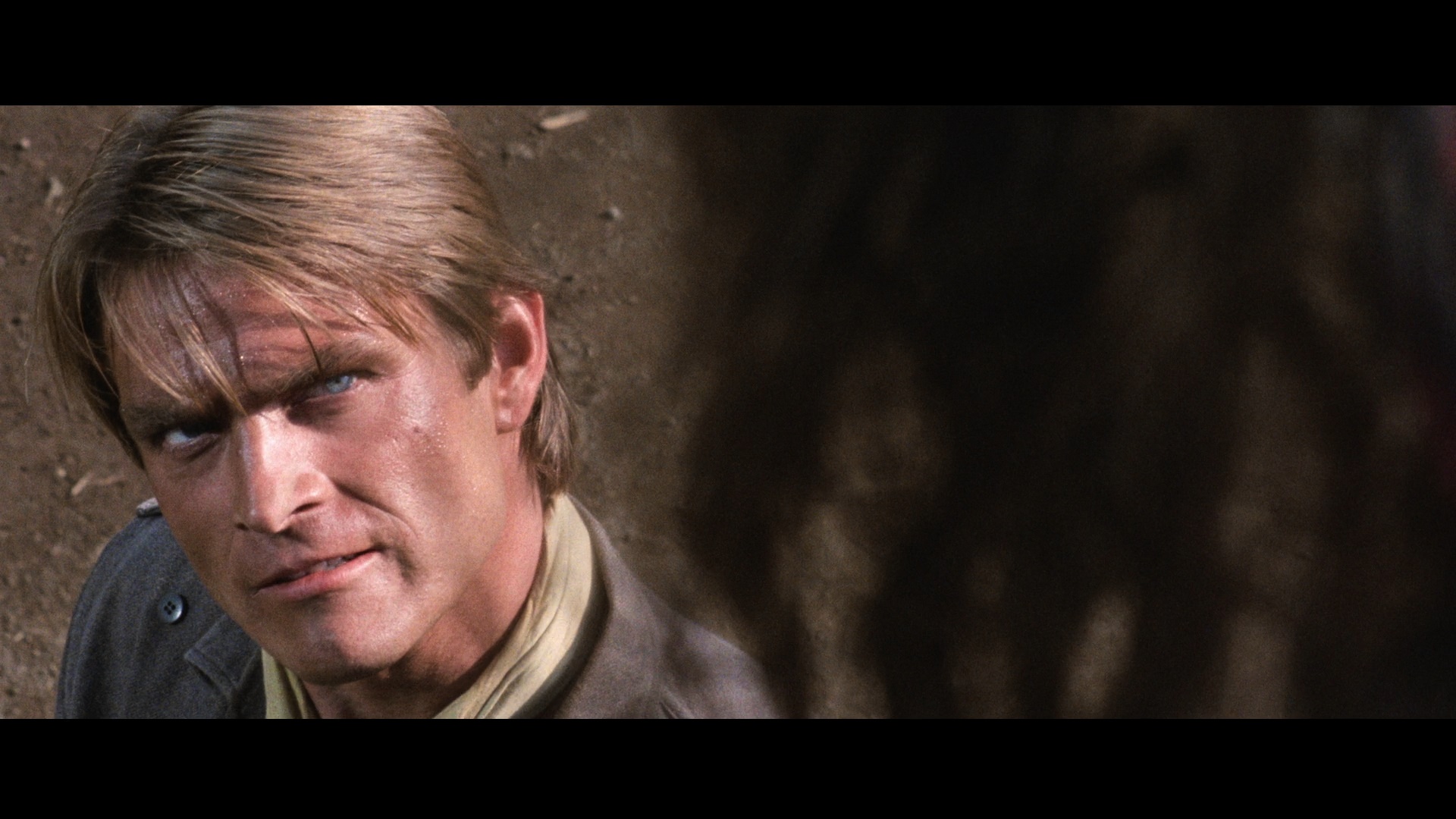 a lyrical and often aggressive folk-psych concoction with multiple internal monologue-style songs by "Sybil & Guy." As much of a matter of taste as the soundtrack may be, it definitely heightens the already strange atmosphere of the film and adds to its stylized approach. That extends down to the use of the witch figure as a sort of narrative linking device, no doubt necessitated by the fact that the original substandard script was chucked out just before shooting with many scenes written along the way by the cast and crew. That largely improvised feeling turned out to be an asset here though as the film ebbs and flows in a truly unique fashion, with the otherworldly opening scene setting the tone that manages to stay consistent throughout the entire film.
a lyrical and often aggressive folk-psych concoction with multiple internal monologue-style songs by "Sybil & Guy." As much of a matter of taste as the soundtrack may be, it definitely heightens the already strange atmosphere of the film and adds to its stylized approach. That extends down to the use of the witch figure as a sort of narrative linking device, no doubt necessitated by the fact that the original substandard script was chucked out just before shooting with many scenes written along the way by the cast and crew. That largely improvised feeling turned out to be an asset here though as the film ebbs and flows in a truly unique fashion, with the otherworldly opening scene setting the tone that manages to stay consistent throughout the entire film.  but imperfect HD transfer that featured some obviously
but imperfect HD transfer that featured some obviously 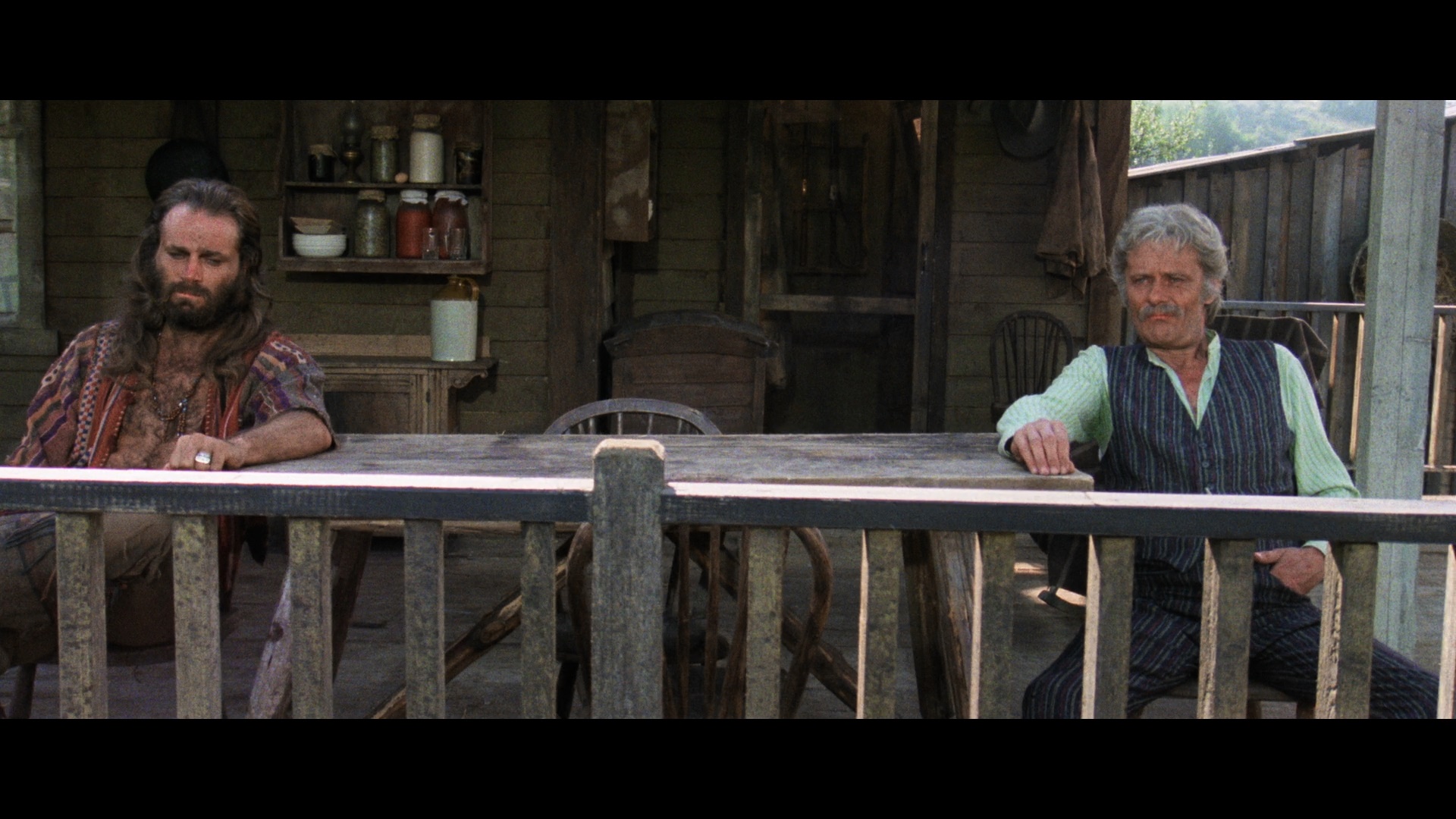 filtering that tended to smooth out facial and clothing details.
filtering that tended to smooth out facial and clothing details.  to Porno Holocaust and Dog Lay
to Porno Holocaust and Dog Lay  Afternoon for good measure thanks to one of the screenwriters, George Eastman. The new Nero interview "The Ballad of Keoma" (21m41s) covers some of the same territory as his earlier one but also touches on some production stories like breaking his hand while punching a horse(!) in one key scene, which posed a problem when he had to immediately start shooting Hitch-Hike. Then Castellari appears in "Ashes to Ashes, Dust to Dust" (28m53s), explaining how he first got into westerns and how this one evolved under somewhat turbulent circumstances with the public shifting away at the time, while "Writing Keoma" (16m14s) features Eastman (a.k.a. Luigi Montefiori) explaining how the film originated as a Django sequel before morphing through the influence of one of his favorite childhood comic characters. He also recalls the original script, which had more fantastic elements and a spectacularly gruesome origin story for its main character. Editor Gianfranco Amicucci turns up in "Parallel Actions" (22m18s) for an analysis of the innovative techniques he and Castellari brought to this film and Street Law, including an insanely large number of cuts and the use of slow motion to accentuate drama, while "The Flying Thug" (24m3s) with actor Massimo Vanni is highlighted by his raucous stories about doing physically demanding action scenes after being inspired to go into movies by Giuliano Gemma. More on the acting angle is provided in "Play as an Actor" (30m2s) with Wolfango Soldati, who made the move in front of the camera after starting out as a photographer. (And no, his real voice is nothing like the twangy drawl heard in the film!) Academic Austin Fisher offers his own reading on the film in "Keoma and the Twilight of the Spaghetti Western" (18m43s) as a striking, time-twisting take on the genre influenced by the then-recent I Guappi. Also included is an archival video intro by director Alex Cox (5m3s), the Italian and English international trailers, and four galleries: production stills, posters and press, lobby cards, and home video and soundtrack sleeves.
Afternoon for good measure thanks to one of the screenwriters, George Eastman. The new Nero interview "The Ballad of Keoma" (21m41s) covers some of the same territory as his earlier one but also touches on some production stories like breaking his hand while punching a horse(!) in one key scene, which posed a problem when he had to immediately start shooting Hitch-Hike. Then Castellari appears in "Ashes to Ashes, Dust to Dust" (28m53s), explaining how he first got into westerns and how this one evolved under somewhat turbulent circumstances with the public shifting away at the time, while "Writing Keoma" (16m14s) features Eastman (a.k.a. Luigi Montefiori) explaining how the film originated as a Django sequel before morphing through the influence of one of his favorite childhood comic characters. He also recalls the original script, which had more fantastic elements and a spectacularly gruesome origin story for its main character. Editor Gianfranco Amicucci turns up in "Parallel Actions" (22m18s) for an analysis of the innovative techniques he and Castellari brought to this film and Street Law, including an insanely large number of cuts and the use of slow motion to accentuate drama, while "The Flying Thug" (24m3s) with actor Massimo Vanni is highlighted by his raucous stories about doing physically demanding action scenes after being inspired to go into movies by Giuliano Gemma. More on the acting angle is provided in "Play as an Actor" (30m2s) with Wolfango Soldati, who made the move in front of the camera after starting out as a photographer. (And no, his real voice is nothing like the twangy drawl heard in the film!) Academic Austin Fisher offers his own reading on the film in "Keoma and the Twilight of the Spaghetti Western" (18m43s) as a striking, time-twisting take on the genre influenced by the then-recent I Guappi. Also included is an archival video intro by director Alex Cox (5m3s), the Italian and English international trailers, and four galleries: production stills, posters and press, lobby cards, and home video and soundtrack sleeves.Arrow Video (Blu-ray)
Mill Creek (Blu-ray)
Blue Underground (DVD)
Reviewed on May 8, 2019.
![]()